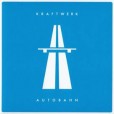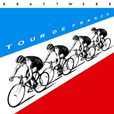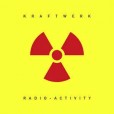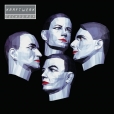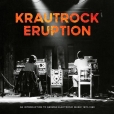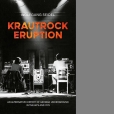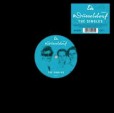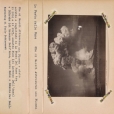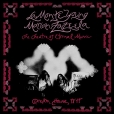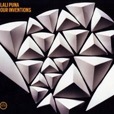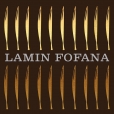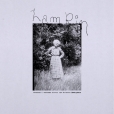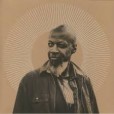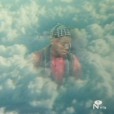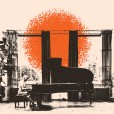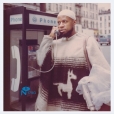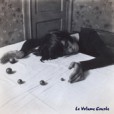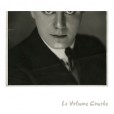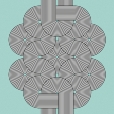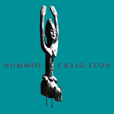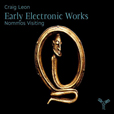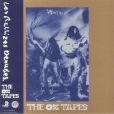Your basket is empty

‘A rousing counter-narrative to the usual depictions of Krautrock, which paints a vivid picture of the old Federal Republic of Germany, with all its contradictions. What is now celebrated as Krautrock emerged in this environment, as an attempt to provide the revolution with a soundtrack. This is a vivid, fly-on-the-wall account of the squats, demos and first concerts of bands such as Cluster, Tangerine Dream and Ash Ra Tempel; also a judicious consideration of the influence of minimalist composers such as Steve Reich and Philip Glass, the origins of many Krautrock musicians in jazz, and the role of the synthesiser.’
Great reviews: ‘compelling,’ says Mojo; ‘passionate and revealing,’ says Record Collector.
Reissued for the first time since its initial 1969 release.
Side one was recorded earlier that year at the gallery of Heiner Friedrich in Munich, where Young and Zazeela premiered their Dream House sound and light installation. Running their voices against a sine wave drone, the composition has its roots in The Tortoise, His Dreams and Journeys, begun in 1964 with The Theatre of Eternal Music. According to Young, the raga-like melodic phrases of his voice were heavily influenced by his future teacher, the Hindustani singer Pandit Pran Nath.
Side two was recorded in Young and Zazeela’s NYC studio in 1964. A section of the longer composition Studies in the Bowed Disc, this is an extended, highly abstract noise piece for bowed gong. The liner notes explain that the record can be played at 33 and 1/3 rpm as usual, but also at any slower speed down to 8 and 1/3 RPM on turntables with this capacity.
Scintillating, alchemical kosmische; visionary, deep, and luminous; and beautifully sleeved, with gold foiling and silver ink.
Works In Metal fans out a set of acid treatments and finely sharpened blades — cutting, shaping, suspending form. Sounds are melted down and forged as if liquid metal.
The works are paired. Arc’s Blue Flame previews the smoking volatility at the album’s core. Echoes and resonance soften the dissonant, bright textures; all overlaid with Fofana’s signature, percussive kick drums. Welding drills into the discordant thrills and spills of metamorphosis. Sparks fly and the bittersweet arc of change unfolds.
Fofana discreetly folds in text, poetry, and field recordings, spooring their decomposition and recomposition with a prismatic point of view. The coupling Obscure Light (Decomposition) and Obscure Light (Recomposition) marks something new in his music. The pulse is brightly honed, cascading beyond the dancefloor, exultingly eluding musical genre.
Works in Metal is perhaps Fofana’s most narrative album. At its heart is the killer, extended Lure of the Fragment / So Another Sound Suggests Itself. Melodies circle in call-and-response patterns, balancing proximity and distance, signalling the inward gravity required to work with metal. A nested story-line, with birds flying in; an album within an album. Dredging up memories and associations, Fofana filters in selections from his sound-archives. Layered with synths, field recordings become instruments in their own right. The last three minutes proffer precious clarity — a memory, in miniature, flashed onto molten metal.
In 1943 Suzanne Césaire declared that ‘our surrealism will then supply them the leaven from their very depths. It will be time finally to transcend the sordid contemporary antinomies: Whites-Blacks, Europeans-Africans, civilized-savage: the powerful magic of the mahoulis will be recovered, drawn from the very wellsprings of life. Colonial idiocies will be purified by the welding arc’s blue flame. The mettle of our metal, our cutting edge of steel, our unique communions — all will be recovered’. Works in Metal is a tribute to her prophecy; its enactment, sculpted in sound.
Digging deep in archives from West Virginia University to the British Library — across seven decades, 1934-2001 — in search of versions of the chilling ballad of Lamkin, about the grisly murder of a woman and her small child.
‘The definitive collection of Laraaji’s earliest works, Segue To Infinity compiles his 1978 debut Celestial Vibration and six additional side-long studio sessions from previously unknown acetates from the same period. A lengthy essay by Living Colour’s Vernon Reid chronicles the origins of Edward ‘Flash’ Gordon, illustrated with dozens of previously unpublished photographs that capture this beautiful and elusive young artist. Full of discovery and wonderment, Segue To Infinity is a miraculous chronicle of new age’s most fabled artist.’
‘An overview of his earliest works, gathering selections from his 1978 debut Celestial Vibration and six additional studio sessions from the era. Full of discovery and wonderment, Glimpses of Infinity is a miraculous chronicle of new age’s most fabled artist.’
The first of three 10” comprising Charlotte Courbe’s third album; her compelling return to Honest Jon’s after two decades, laced with surprise and subversiveness, and a refreshing, unique candour.
After a cancer diagnosis last year, Charlotte felt the urge to produce and release new music. “It became like a vital thing.”
MRI Song and Planet Ping Pong were recorded during chemotherapy. Mind Contorted is a duet with Terry Hall, also featuring Terry’s son Theodore and Noel Gallagher on guitars, in a cover of Daniel Johnston. The song Fourteen Years is the oldest inclusion, announcing a fresh, freer direction.
The sleeve exclusively presents new work by John Stezaker, in the first of a triptych.
“I put out the first Le Volume Courbe single in 2001… she reminded me of a female Syd Barrett… real psychedelic soul” (Alan McGee).
“Inspiring originality, fiercely independent, beautiful music, always years ahead of its time. I remember hearing Charlotte’s music for the first time and being immediately taken by the freshness, great melodies and utterly unique approach” (Kevin Shields).
‘Swooping, sub-heavy sci-fi from Riz Maslen, under a new moniker.
‘Heavy-lidded and ethereal, its balance of bass weight, mechanical metre, and darkly tinted new age feels like a cinematic re-approach to some of the textures, moods, and themes of her 1996 Laundrophonic maxi, under the alias Neotropic.
‘Stairway 13 folds in decades of experience in sound design and theatre, along with shards and elements abstracted from Riz’ more recent folk-like music, zoning into a deep, retreated, altogether dreamlike and expansive atmosphere. The scale and soundscape is reminiscent of Geinoh Yamashirogumi and their Ecophony album series, resonating to similar frequencies and exploring themes of chaos and rebirth in feature-length form.
‘The four parts spread and swoop as single extended sides across this double LP. Carried by waves of sub bass and heavenly chorus, and later punctuated with autonomic clicks of machinery, whirrs, and pulses, the work forms a gothic, otherworldly ambience. A subtle space opera.’
Terrific album, originally out on Takoma in 1981 — an edgy, angsty, spiritual mix of Suicide, Cluster, La Monte Young, Terry Riley, West African rhythms… which still sounds bang up to date. Hotly recommended.
‘Almost transparent white vinyl.’
